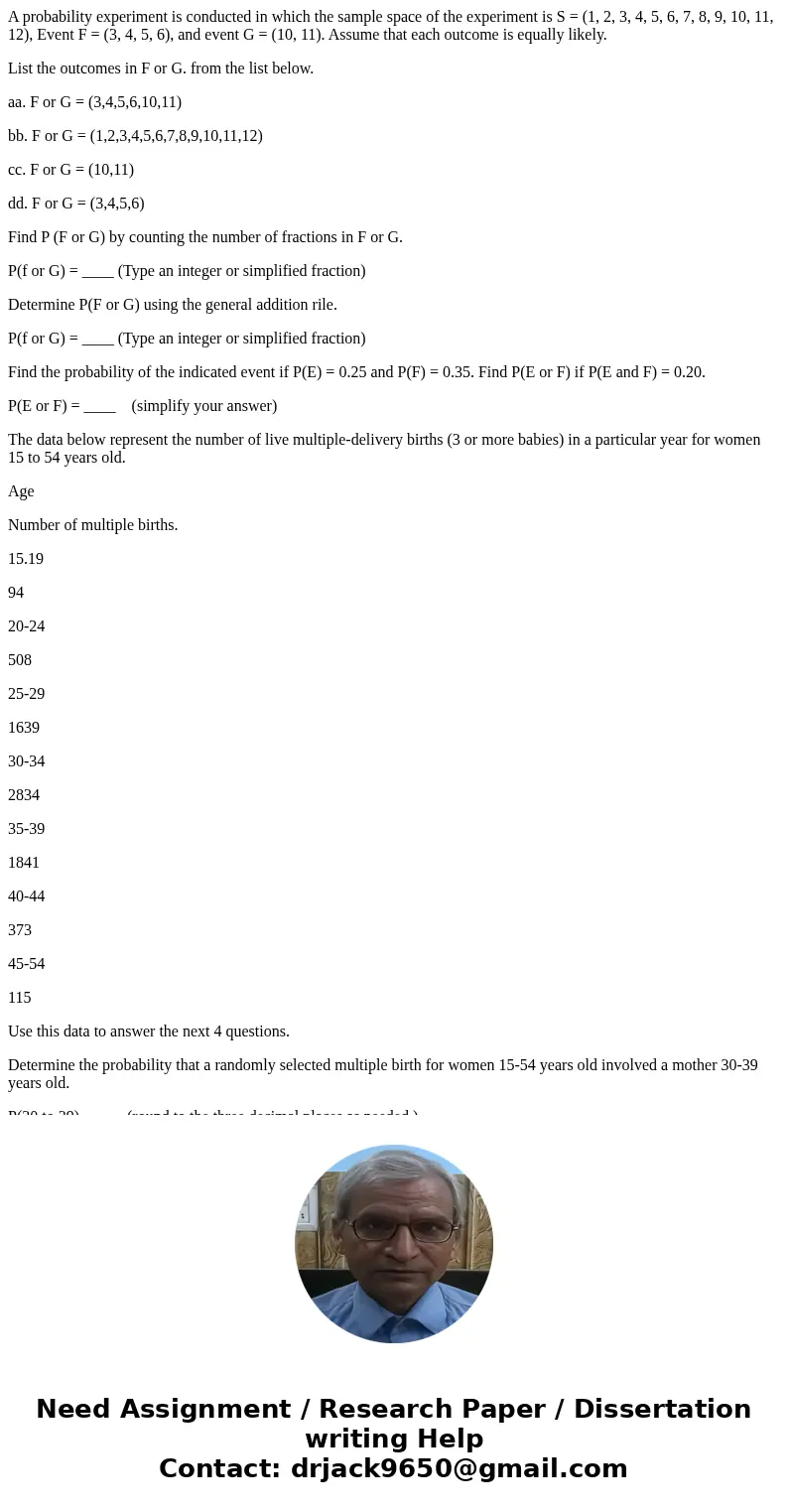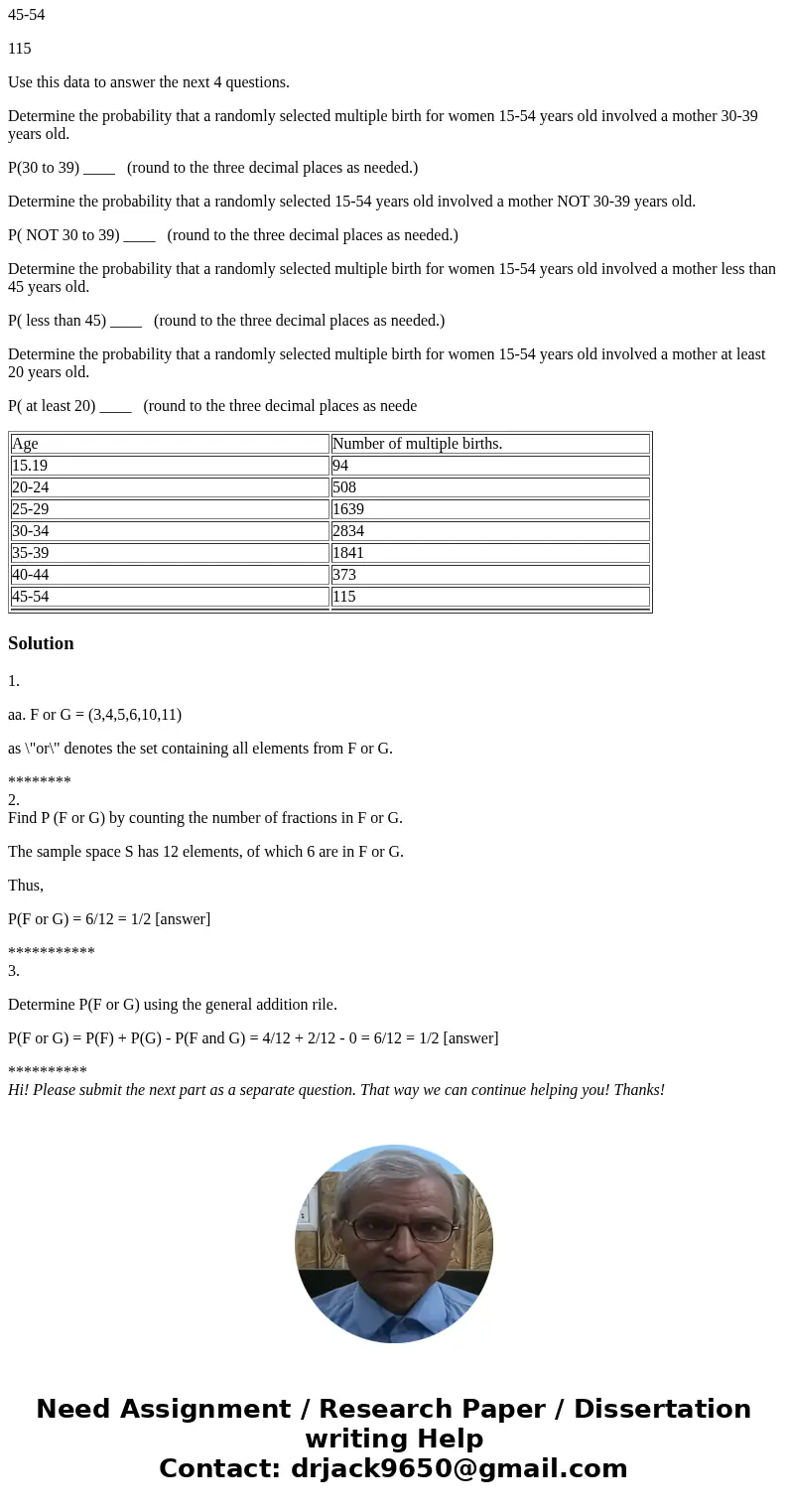A probability experiment is conducted in which the sample sp
A probability experiment is conducted in which the sample space of the experiment is S = (1, 2, 3, 4, 5, 6, 7, 8, 9, 10, 11, 12), Event F = (3, 4, 5, 6), and event G = (10, 11). Assume that each outcome is equally likely.
List the outcomes in F or G. from the list below.
aa. F or G = (3,4,5,6,10,11)
bb. F or G = (1,2,3,4,5,6,7,8,9,10,11,12)
cc. F or G = (10,11)
dd. F or G = (3,4,5,6)
Find P (F or G) by counting the number of fractions in F or G.
P(f or G) = ____ (Type an integer or simplified fraction)
Determine P(F or G) using the general addition rile.
P(f or G) = ____ (Type an integer or simplified fraction)
Find the probability of the indicated event if P(E) = 0.25 and P(F) = 0.35. Find P(E or F) if P(E and F) = 0.20.
P(E or F) = ____ (simplify your answer)
The data below represent the number of live multiple-delivery births (3 or more babies) in a particular year for women 15 to 54 years old.
Age
Number of multiple births.
15.19
94
20-24
508
25-29
1639
30-34
2834
35-39
1841
40-44
373
45-54
115
Use this data to answer the next 4 questions.
Determine the probability that a randomly selected multiple birth for women 15-54 years old involved a mother 30-39 years old.
P(30 to 39) ____ (round to the three decimal places as needed.)
Determine the probability that a randomly selected 15-54 years old involved a mother NOT 30-39 years old.
P( NOT 30 to 39) ____ (round to the three decimal places as needed.)
Determine the probability that a randomly selected multiple birth for women 15-54 years old involved a mother less than 45 years old.
P( less than 45) ____ (round to the three decimal places as needed.)
Determine the probability that a randomly selected multiple birth for women 15-54 years old involved a mother at least 20 years old.
P( at least 20) ____ (round to the three decimal places as neede
| Age | Number of multiple births. |
| 15.19 | 94 |
| 20-24 | 508 |
| 25-29 | 1639 |
| 30-34 | 2834 |
| 35-39 | 1841 |
| 40-44 | 373 |
| 45-54 | 115 |
Solution
1.
aa. F or G = (3,4,5,6,10,11)
as \"or\" denotes the set containing all elements from F or G.
********
2.
Find P (F or G) by counting the number of fractions in F or G.
The sample space S has 12 elements, of which 6 are in F or G.
Thus,
P(F or G) = 6/12 = 1/2 [answer]
***********
3.
Determine P(F or G) using the general addition rile.
P(F or G) = P(F) + P(G) - P(F and G) = 4/12 + 2/12 - 0 = 6/12 = 1/2 [answer]
**********
Hi! Please submit the next part as a separate question. That way we can continue helping you! Thanks!


 Homework Sourse
Homework Sourse